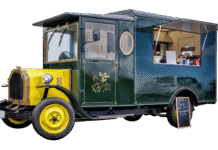Opening a restaurant is exciting yet terrifying. There are many things to think about and choices to make when operating any kind of restaurant, from a tiny café to an expensive dining facility. Finding the proper location, installing your kitchen equipment, and stocking up on supplies for your opening might seem like an insurmountable task. But fear not! This blog post has restaurant starting suggestions.
-
Make sure you’re licensed before continuing.
When purchasing and opening a restaurant, one of the most critical steps is securing the necessary permits and licenses. A key requirement for many establishments is obtaining a liquor license, which can vary significantly in cost and complexity depending on your location. Understanding the process and exploring funding options can help you navigate this essential aspect of your restaurant business, ensuring you’re fully prepared to serve your customers.
Get a food service license so that you may legally serve meals at the restaurant. To issue this license, an inspector must first verify that your establishment complies with all applicable health and sanitation laws. Research your state’s liquor regulations, submit the necessary documentation, and pay the stipulated licensing fee to get a liquor license if you want to offer alcoholic beverages at the restaurant.
-
Choose your space
To choose an excellent restaurant location, watch the neighborhood. Find out whether numerous prospective clients dwell in the area. Also, check to determine whether there is sufficient parking for the building’s visitors.
Find out whether other restaurants or companies like yours have operated in the building or the adjacent space. If the business has closed, the owner or nearby residents might likely shed light on the situation. Any dangers associated with setting a shop in that area can thus be avoided. Check the inside of the building to see whether there’s enough room for a waiting area, bar, refrigerators, seats, and bathrooms if you’ve settled on a suitable site.
-
Choose the label and moniker
Think about the restaurant’s identity before you name it. The restaurant’s brand is the mental image the business hopes its patrons will have whenever they hear the name. Your brand’s identity may be conveyed via your message, visuals, purpose, and values. Choose your business’s mission and message.
Next, name the restaurant to represent its attitude, ambiance, and purpose. It might be a personal phrase or a play on the company’s name or product. Name your company something memorable that will also be simple for people to say and spell.
-
Supply ordering
As soon as you choose the ideal spot for your eatery, you should begin placing your supply orders. You’ll need commercial kitchen equipment such as sandwich and pizza preparation tables, commercial refrigerators and freezers, deep fat fryers, and charbroilers. Financing restaurant equipment allows you to put your cash flow toward other investments. Do your research to get the best possible terms.
If your budget permits it, you may also want to consider purchasing new commercial-grade equipment with warranties. This kind of gear is known to survive for a longer period of time and can frequently sustain more usage than secondhand restaurant equipment.
McDonald Paper & Restaurant Supplies is a trusted supplier of a wide selection of restaurant equipment. You can order delivery through the website or visit an offline store located in Brooklyn.
-
Prepare a kitchen for use
After gathering everything, arrange your kitchen. Make sure you’re familiar with the functionality of each device (and any necessary safety measures) by reading the respective manuals before proceeding. The next step is to draw out a layout of the space, taking into account the location of each piece of equipment but yet allowing for free staff movement. Finally, training your workers will keep everyone secure and guarantee that your orders are always precise. If you work hard, you can start a restaurant quickly. Locate an appropriate location for your eatery, then go shopping for necessary equipment and supplies before arranging the kitchen.
-
Conceive a menu
Creating a menu and deciding what to offer is much less of a hassle after you have established your idea, brand, and location. Your menu should be well-organized and informative of the items so that clients can quickly make a decision. Use a legible typeface and sturdy paper to prevent accidental damage.
Be sure your menu appeals to your typical customer. If, for instance, your ideal clientele consists of families, don’t forget to include kid-friendly options on the menu. Elegant eateries often have extensive wine lists.
-
Get the word out!
When the restaurant opens, you may start promoting to attract customers. Your restaurant’s marketing and promotion should notify prospective consumers about the establishment’s address, phone number, and hours of operation.
You should also invest in training for your staff to ensure that your customers’ orders are always fulfilled accurately. We hope these suggestions prove helpful on your next adventure. Have fun!


























